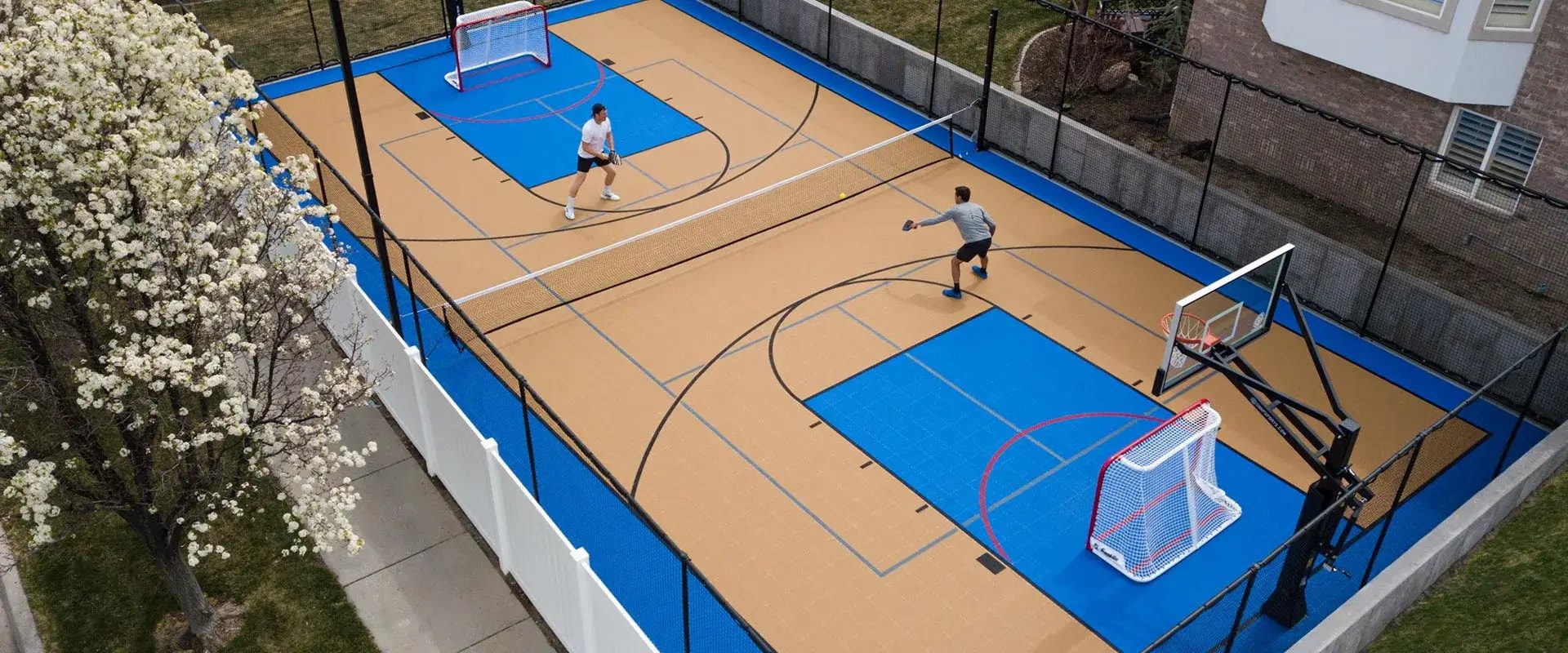Trick Elements in the Building And Construction of Pickleball Courts: From Website Selection to Last Surfaces
The building and construction of pickleball courts incorporates a range of crucial factors, starting with the selection of a proper site that stabilizes accessibility with environmental factors to consider. Crucial elements such as court dimensions, surface materials, and drainage systems dramatically influence not just the high quality of play but additionally the durability of the facility.
Website Selection Criteria
When starting the building of pickleball courts, it is vital to nail down the website choice standards that will make sure optimal playability and ease of access. The location must be conveniently obtainable for gamers, preferably situated near residential locations or area facilities, to motivate involvement.
In addition, the surface ought to be level and stable, as uneven ground can result in safety and security dangers and impact gameplay. Sufficient drainage is also critical; selecting a site with excellent water drainage will aid keep court problems during damaging climate.
An additional essential consideration is the accessibility of utilities. Access to electrical energy and water is essential for lighting and upkeep functions. Additionally, closeness to auto parking facilities is essential, assisting in easy accessibility for players and viewers alike.
Environmental variables can not be ignored; natural color from trees can enhance gamer comfort, while exposure to dominating winds may interrupt play. Lastly, zoning guidelines and community assistance should be thought about to ensure that the project straightens with local guidelines and obtains the support it requires for effective execution. By carefully examining these criteria, stakeholders can create a welcoming and useful environment for pickleball enthusiasts.
Court Dimensions and Design
To guarantee ideal gameplay and adherence to guidelines, the measurements and design of pickleball courts need to be very carefully specified. A common pickleball court gauges 20 feet in size and 44 feet in size for both singles and doubles play.
The net height is evaluated 36 inches at the sidelines and 34 inches at the facility, developing a mild dip that influences round trajectory. Court markings are just as vital; lines need to be 2 inches large and unique in shade to guarantee visibility.
Additionally, a buffer area bordering the court is recommended, usually prolonging 5 to 10 feet beyond the sidelines and standards to suit players' movements and enhance safety. Correct format and measurements not only make sure compliance with official laws however likewise enhance the total having fun experience, accommodating both entertainment and affordable play. Careful preparation in these locations is critical to the effective building and construction of pickleball courts.
Surface Material Options
Picking the best surface area product for pickleball courts is essential for ensuring optimum player efficiency and security. The selection of surface can significantly influence gameplay, including round bounce, traction, and gamer comfort.
There are numerous choices readily available, each with its unique characteristics. Asphalt is a prominent choice because of its sturdiness and reduced upkeep requirements. It gives a solid having fun surface that can stand up to various weather condition problems but might call for periodic resurfacing.
Concrete is one more extensively utilized material, using excellent long life and a smooth finish. It permits consistent ball bounce yet can be hard on players' joints, making it much less preferable for long-term play without appropriate padding.
For those looking for enhanced comfort and shock absorption, supported acrylic surface areas offer a practical option. These surface areas incorporate a base layer with an acrylic topcoat, offering boosted grip and a softer feeling, which is useful for lowering the threat of injuries.
Lastly, synthetic grass is getting grip, specifically for multi-purpose centers. Its versatility and lower maintenance needs make it an attractive option, though it may not offer the very same round feedback as traditional hard courts. Careful consideration of these choices will guarantee an ideal having fun setting.
Water Drainage and Lighting Considerations
Proper drainage and effective illumination are crucial parts in the construction of pickleball courts, considerably affecting both playability and safety and security. Adequate drainage systems avoid water build-up, which can cause unsafe surface areas and Recommended Site damages to the court framework. A properly designed water drainage plan incorporates sloped surfaces and ideal products to assist in water flow far from the playing area - Illinois and midwest. This not only maintains the integrity of the court yet also minimizes downtime due to poor weather.
Illumination is just as critical, especially for courts meant for night usage. The positioning of lighting fixtures must be purposefully intended to remove darkness and provide even circulation of light across the court.

Final Surfaces and Maintenance
After resolving drainage and lighting factors to consider, interest turns to the final coatings and continuous maintenance of pickleball courts. Common alternatives consist of acrylic layers redirected here and specialized sporting activities surfaces that provide optimum grip and cushioning.

Seasonal maintenance could include resurfacing every couple of years, depending on use and ecological elements. Effectively preserving webs, court lines, and surrounding areas is just as important to give a safe and satisfying having fun experience. By investing in high quality coatings and adhering to a structured upkeep timetable, facility owners can ensure their pickleball courts stay in superb condition for many years to find.
Verdict
In verdict, the effective building of pickleball courts hinges on meticulous focus to a number of essential elements. More Help Quality coatings and a robust maintenance timetable are vital for protecting the court's condition, improving the general experience for players and viewers alike.